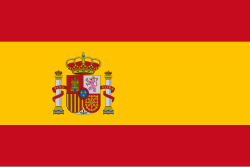World Lighthouse Day is celebrated in honor of the buildings located overlooking the great oceans that serve as guides for vessels at night and on stormy days.
The origin of this event dates back to the United States of America, where it was established to commemorate the signing of the Act for the Establishment and Support of Lighthouses, Beacons, Buoys, and Public Wharves, passed by the U.S. Congress in 1789. Over time, other countries joined the initiative, celebrating it as “World Lighthouse Day.”
Cuba has around forty lighthouses. The main reason for their creation was to use them as guides for the safe navigation of vessels, especially at the entrance to ports, as well as in channels, passages, or in places where there are dangers for the passage of ships. In the latter, the most notable are the lighthouses of Cape San Antonio in the province of Pinar del Rio, Punta de Maisí (Guantanamo), and Cabo Cruz in the city of Manzanillo (Granma).
On the northern coast of Holguin is the Punta Lucrecia Lighthouse, considered one of the 100 most important in the world due to its geographical location.
The first European to sight or leave written evidence of this geographical area was Admiral Christopher Columbus, who, on his first voyage to the Americas, explored these coasts, first sighting Boca de Sama, a municipality in Banes, which he named Rio Sol.
Later, on November 12th, 1492, he sighted a cape where he believed the eastern tip of the island was located, which he named “Cape Cuba,” now Cape Lucrecia.
Among the most iconic lighthouses in the rest of Cuba are:
The Morro Castle Lighthouse, located in the Castillo de los Tres Reyes del Morro, is a lighthouse located in the city of Havana, the Cuban capital. It was built in 1845 on the walls of the Castillo de los Tres Reyes del Morro, a former Spanish fortress guarding the port of Havana.
The Paredón Grande Lighthouse, built in the mid-19th century, is a significant element of Cuba’s highly valuable engineering projects. Its location covers the entire northern coast of the central region of the Cuban archipelago. It is connected to the mainland by a 33-kilometer causeway (a road over the sea). It is built on a rock north of Cayo Paredón and can be reached by land via a 40-kilometer road that departs from Cayo Coco.
The Roncali Lighthouse, located on Cape San Antonio, the westernmost part of Cuba, is a landmark throughout the country. Its function in guiding vessels through the dangerous waters of Cuba’s westernmost tip is highlighted. September 15th, 1850.
The Colón Lighthouse, the second tallest in Cuba, surpassed only by the Morro Lighthouse in Santiago de Cuba. The structure is located at 21°39’45” North latitude and 77°08’26” West longitude on Punta Maternillos, a spit of land on Cayo Sabinal, part of the Sabana-Camagüey archipelago in the municipality of Nuevitas. The lighthouse’s name was inscribed on the front of the tower, and its colors identify it from the Old Bahamas Channel.
Punta de Maisi Lighthouse, located at the easternmost tip of the Cuban archipelago, very close to Baracoa, in the province of Guantanamo. Its construction was authorized in 1856 by the Queen of Spain, and after five years of work directed by Engineer Don Marianao Moreno. It was inaugurated in 1862 as the Concha Lighthouse.
The Cabo Cruz Lighthouse, located in Cabo Cruz, a rural area of the municipality of Niquero, Granma province, was built by the Civil Engineers Corps and inaugurated on May 5th, 1871. It was originally called the Vargas Lighthouse, in honor of Brigadier Carlos de Vargas Machuca, Commander of the Eastern Department at the time.
The building constitutes an architectural complex, primarily composed of the Lighthouse Keeper’s House and the lighthouse. Due to its incalculable historical significance, architectural, cultural, and social values, it was declared a Local Monument of Cuba on December 30th, 1991, by the National Monuments Commission. Just as in its beginnings, the Cabo Cruz Lighthouse still facilitates navigation and guidance for national and international maritime and air vessels.
San Pedro de la Roca Fortress. The San Pedro de la Roca Castle, Santiago de Cuba, was built as a result of commercial and political rivalries in the Caribbean region in the 17th century. The fortress is composed of a series of fortifications on a rocky promontory, built to protect the important port of Santiago. This intricate complex of forts, magazines, bastions, and batteries is the most complete and best-preserved example of Spanish-American military architecture, based on Italian and Renaissance design principles. The complex was included on the UNESCO World Heritage List in 1997.
By: Melissa Laura del Cerro Figueredo
- Holguin to Host National Celebration of Cuban Science Day - 22 de December de 2025
- When Cuba Wrote Its Name in the Light of Knowledge - 22 de December de 2025
- Concha Azul Exports Eels and Sea Cucumber - 22 de December de 2025

